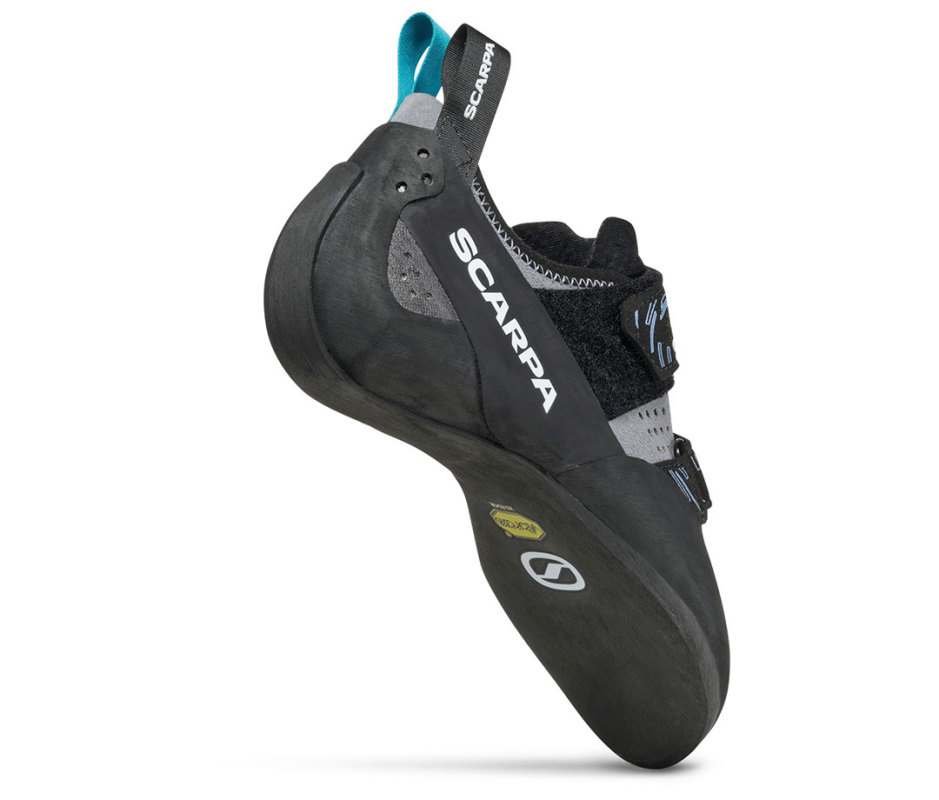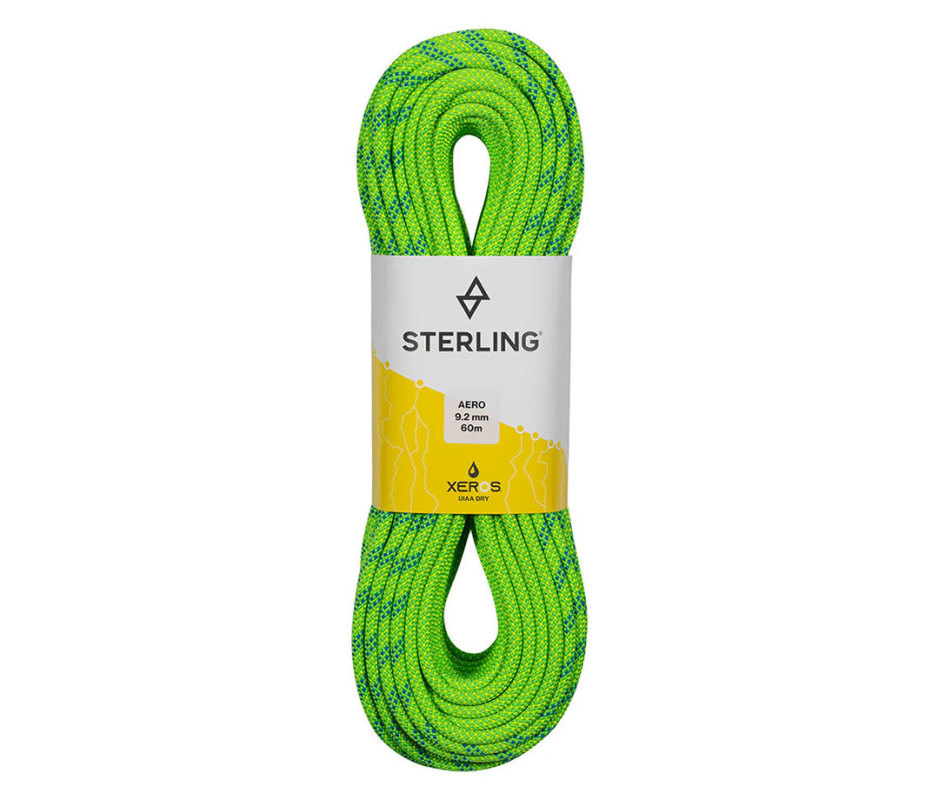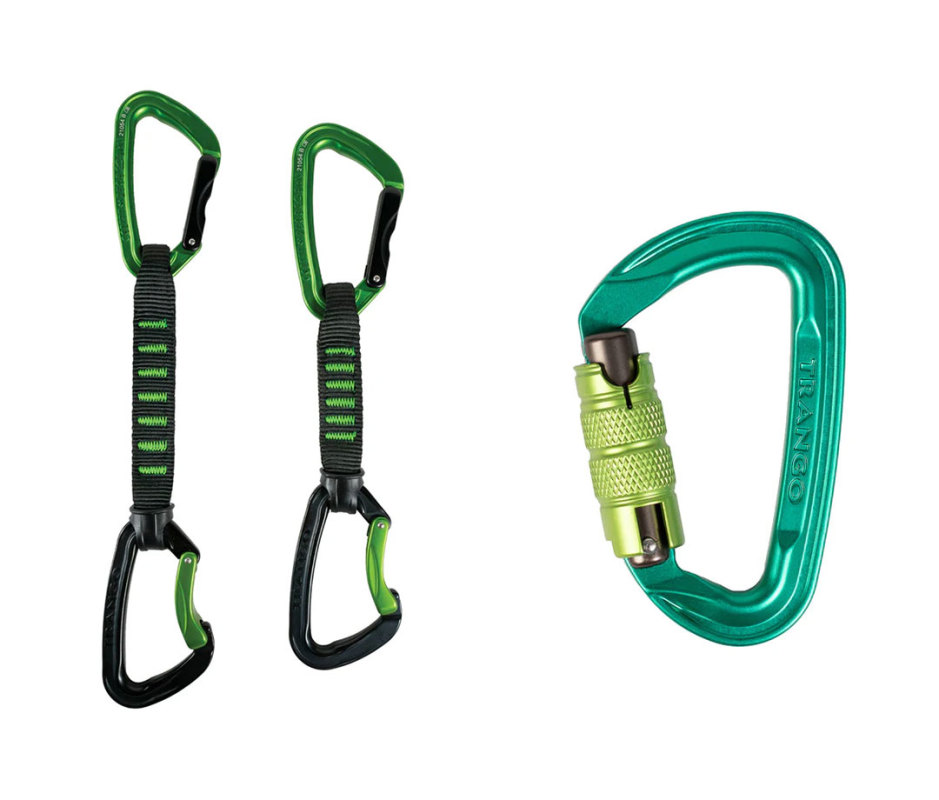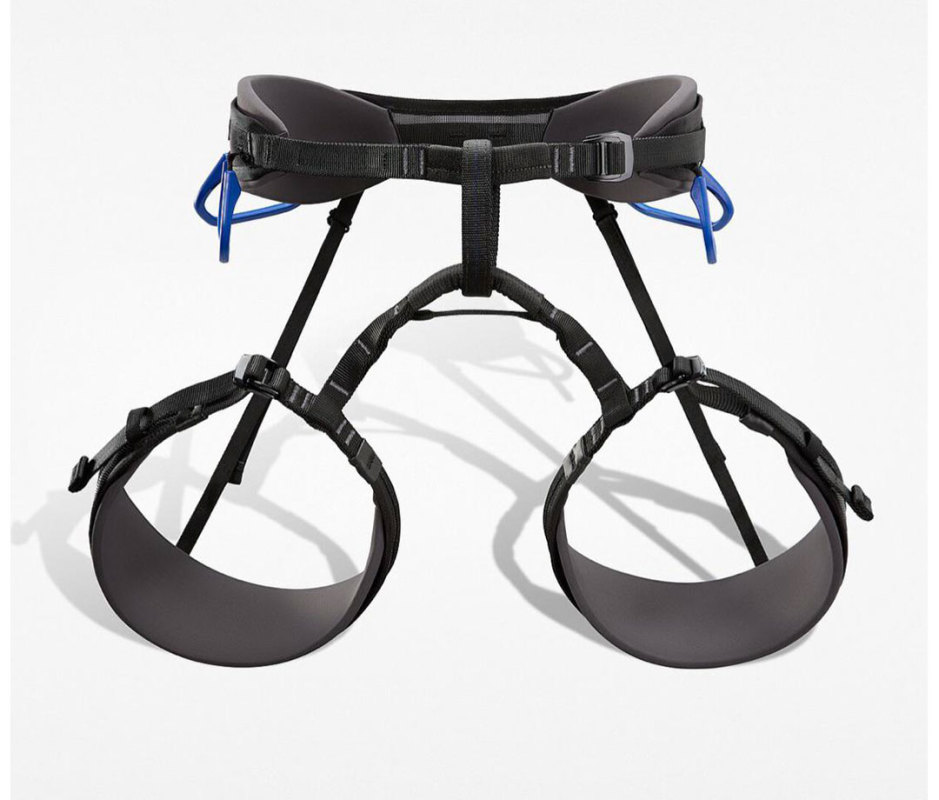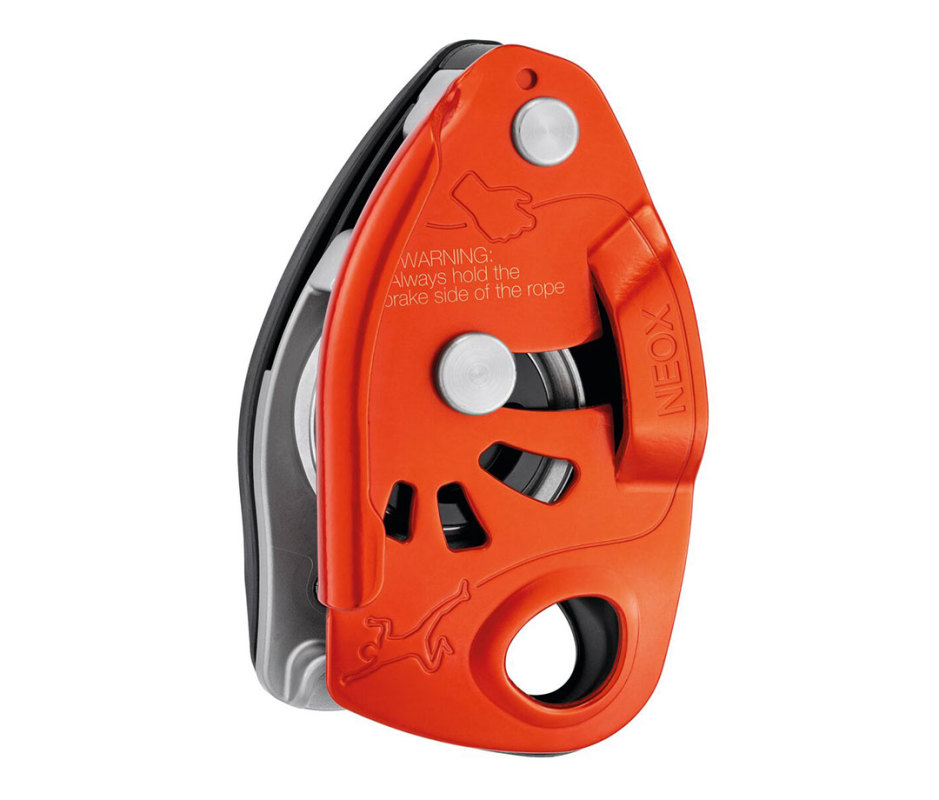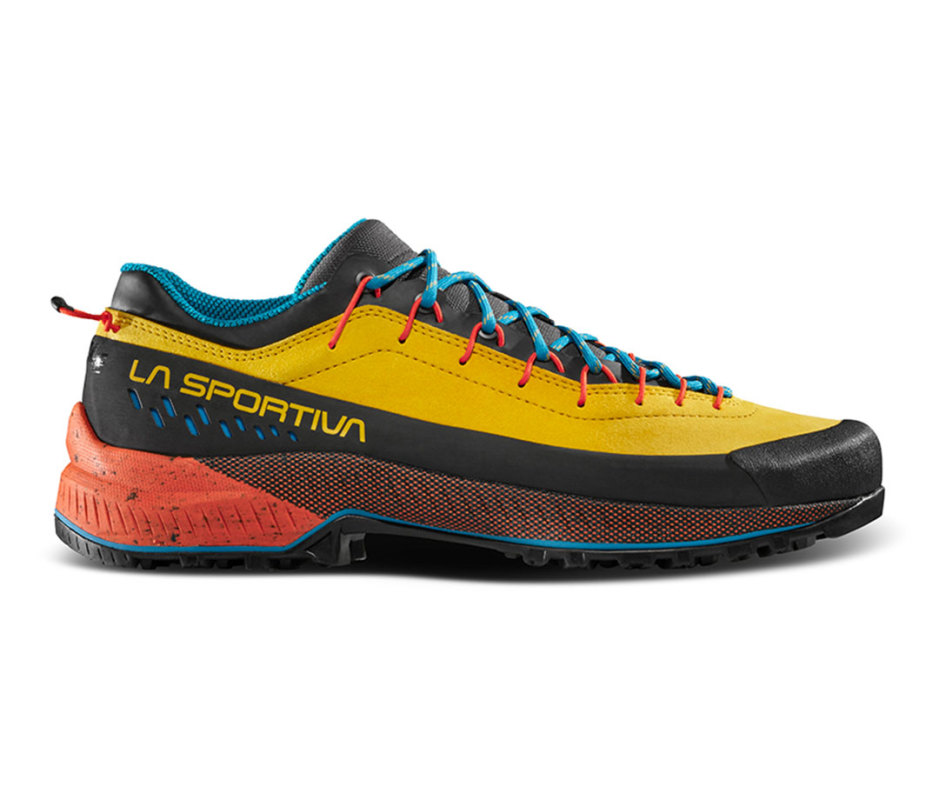Health
5 Rock Climbing Steps to Get You Scaling Walls Like a Pro

There’s nothing as challenging and exhilarating as scaling a vertical rock face. Rock climbing develops sinewy forearms, ripped abs, and well-defined calves. It’s a safer, more accessible version of mountaineering and free soloing, requiring little more than a rock outcrop, some gear, and a partner. After learning the basics of how to rock climb, you can take those skills to any of the best rock climbing destinations for beginners—well beyond your local climbing gym to thousands of sport climbing cliffs around the globe.
Still feeling a little shy? The following five steps will serve as your perfect rock climbing starter guide—and from there, the limits are endless.
Related: These 5 Simple Surfing Steps Will Help You Ride Your First Wave
With sport climbing, you have a safety rope and permanent bolts and anchors attached to the rock. You move up slowly, a few inches to a foot or two at a time. It’s an excellent way to explore the outdoors—and also make close connections with fellow climbers. With more than 650 climbing gyms throughout the U.S., there are many spots to safely learn the sport before getting out there for real.
To help you get started, we spoke with three of the world’s greatest climbers.
Men’s Journal aims to feature only the best products and services. We update when possible, but deals expire and prices can change. If you buy something via one of our links, we may earn a commission.
Meet the Experts
- John Long leads Yosemite’s legendary Stonemasters and has written more than a dozen books about the sport, including How to Rock Climb.
- Jesse Grupper is a professional climber, who’s competing at the 2024 Paris Olympic Games with Team USA.
- Cedar Wright is a pro climber and filmmaker known for gnarly first ascents.

Promo Ascent/Xmedia/Getty Images
1. Rock Climbing Basics: How to Start
You can learn to climb outdoors, but indoors is the safer bet at first. There’s no worrying about rock fall, bad weather, or route finding. By taking an intro climbing course at a rock climbing gym (or gym with rock climbing facilities), you’ll quickly learn the basics.
“Gyms allow you to drastically shorten the learning curve,” says Long. “You’ll learn to put on your harness, belay, use your hands and feet, and lower off a route—all in a controlled environment.”
“Anyone can sport climb,” adds Grupper, who also advises starting in a gym. “While it can be dangerous, if done incorrectly, with some proper training, you can quickly start having fun while upping your skill level.”
Invest in the Best Climbing Shoes and Harness
Climbing shoes are designed to fit more like a snug sock than a running shoe. Pick a pair that’s tight without being painful. “It’s not uncommon to size down an entire size from your street shoe,” says Wright. The climbing harness should also fit tight around your waist with the buckle securely fastened. See our top picks below.
Master the Figure 8 Knot
Rock climbing involves several knots, but none is as important as the figure eight. Practice tying it until you can do it in your sleep. “Always double-check your harness buckle and figure eight,” says Grupper. “Then, have your partner or instructor check them. Once you know you’re secure, you can focus on the business of climbing.”
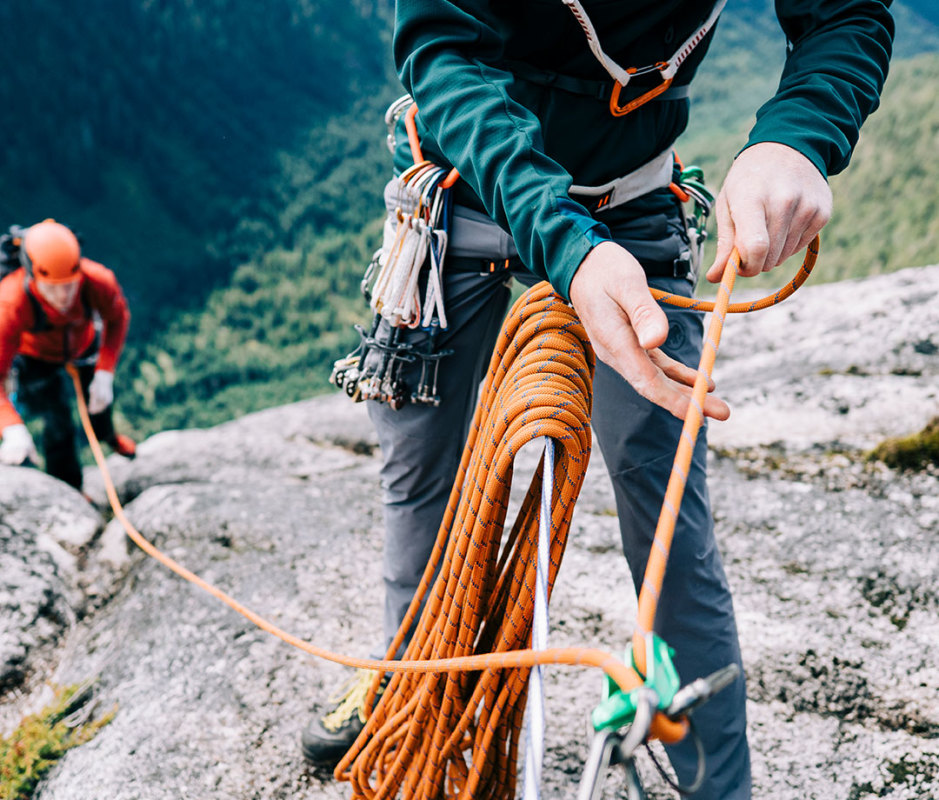
Alex Ratson/Getty Images
Learn How to Belay
When you climb with a rope, you use what’s called a belay. The belayer is the climber who holds the rope in order to protect their climbing partner from a fall. The device is attached to your harness, while the rope runs through it to provide friction so you can arrest a fall. Learning how to belay is as critical in sport climbing as knowing how to step on the brakes in a car. You attach the belay device to your harness, then double check that the carabiner is locked.
“Most climbing gyms will have a belay course, then a belay test you can take that allows you to belay without supervision in the gym,” says Wright.
Practice Climbing Lingo and Terms
“Climbing safely depends on clear, explicit communication,” emphasizes Long. “The first thing you need to learn is how to communicate with your partner.” If you’re belaying, when the climber or leader is ready to start up the wall, you say, “Belay on!”
This indicates that the equipment is set up correctly and you’re paying attention. Your partner then responds with “Climbing!” When he’s at the anchors and ready to be lowered to the ground, he says, “Lower!” You respond with “Lowering!”
When your partner reaches the ground safely or if he’s going to rappel, he’ll say, “Off belay!” and you reply with “Belay off.”
Never skip these steps.
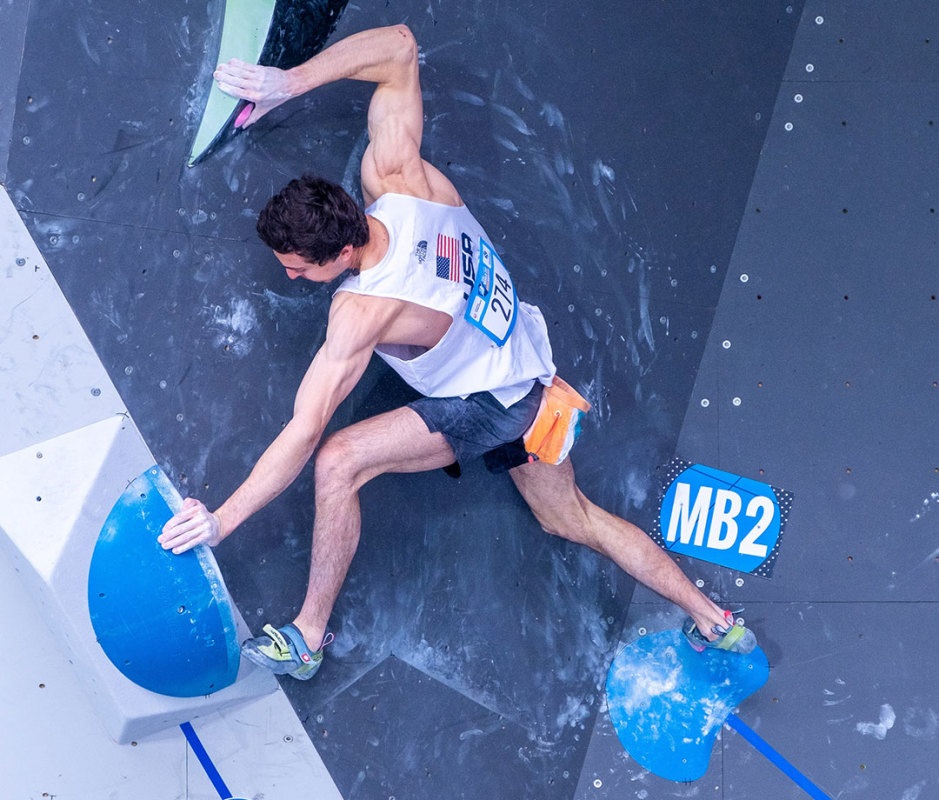
Jesse Grupper Collection
2. Practice Handholds and Foot Work
You don’t need the muscle mass of Jason Momoa to climb. In fact, many sport climbers can barely do a single pullup, but they dance up what appears to be a seemingly blank wall. This is because they have excellent footwork and flawless technique. Climbing successfully requires concentrating on three things: footwork, handholds, and body position.
Smart Feet
“Learn good footwork and body position indoors, then bring those skills to outdoor routes,” says Grupper. “The most important lesson for beginning climbers, as well as experts, is to trust your feet. The more weight you put on your foot, the more likely it will stay in place.”
Climbing shoes are designed to edge and smear. To edge, place the ball of your foot, just behind the toe, firmly on a hold. Then, using your hands to balance, move your weight over your foot and stand up. You can stand on the inside edge of the shoe, the outside edge, and toe.
Related: 7 Wild New Mountain Bike Trails and Destinations
Good Hands
Don’t over-grip. The harder you grip, the more tired your hands and forearms become. “Try to use a hold as a point of balance to move your feet up, especially on lower-angle routes,” says Grupper. “Practice using different types of handholds in the gym, they don’t exactly mimic what you’ll find outdoors, but you’ll learn how to adjust the angle and pressure of your grip.”
Keep your arms straight whenever possible. “When bent, your arms will tire much faster,” adds Long. Hang from your arms, move your feet up, pull up with one arm, which is called a “lock off,” and move the other one to the next handhold. Practice keeping your body close to the rock. Sometimes you’ll turn your hips to the left or right to extend your reach and improve your center of balance.
As Wright explains, “Learning different grab holds as well as foot placements is like building a complete toolbox—with all the tools you need for any project that presents itself.”
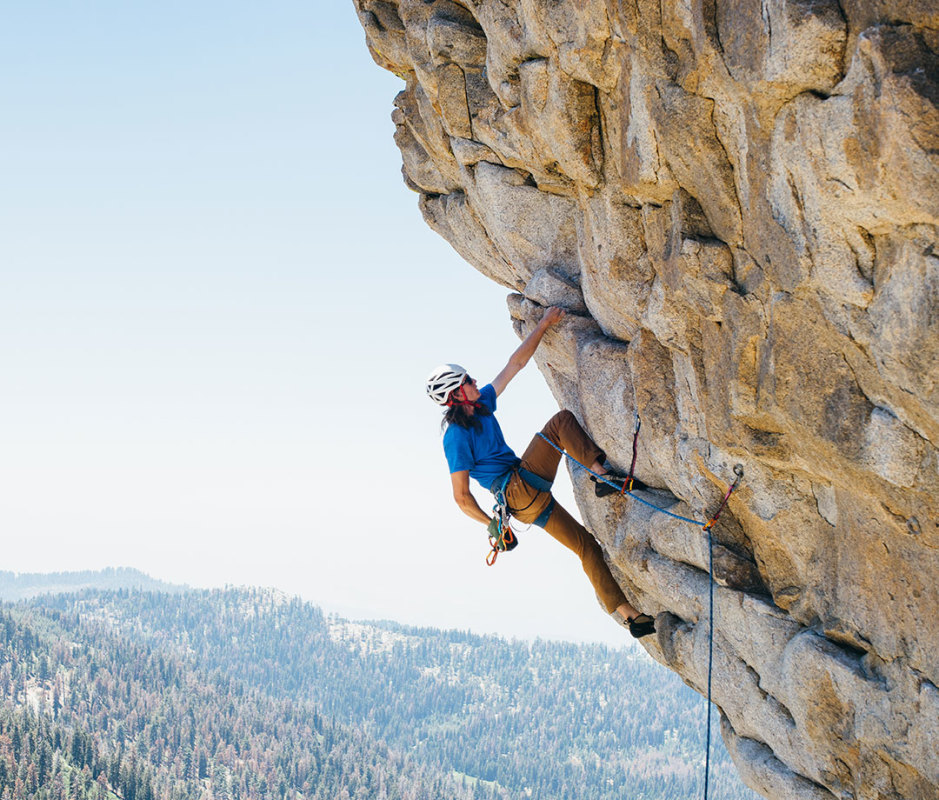
kylewolfe/Getty Images
3. Maximize Flexibility
Climbing is all about body movement. Flexibility can make tough moves easier, allowing you to float through sequences with a fluidity that defies gravity.
Stretching is essential in sport climbing. “It protects your body from injury and allows you to more fluidly adopt different body positions,” says Grupper, who does yoga, as well as back and hamstring stretches in the morning, repeating the process at night.
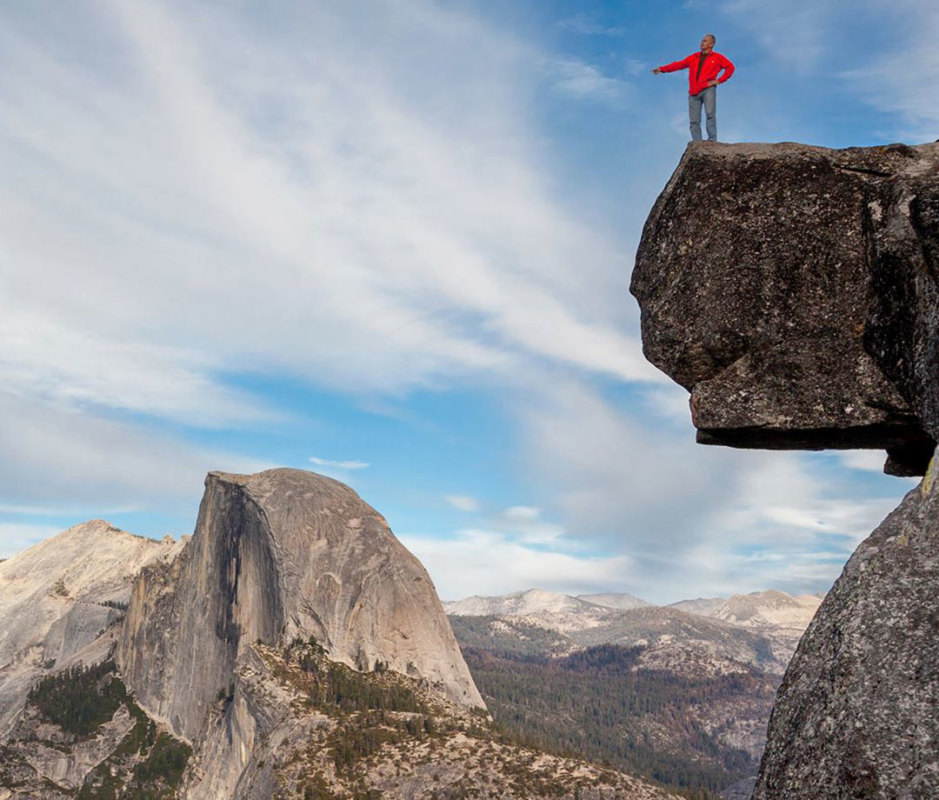
John Long Collection
4. Manage Fear
Climbing can be dangerous, but if you do it right, you can control risk and make it less intimidating. That’s where the safety part comes in. You’ve learned all about tying knots, double-checking your harness, and trusting the rope. Then there’s the mental aspect of climbing, which accounts for at least half of the challenge with this activity. Much of it involves working through natural fear and intimidation.
Related: How to Overcome Fear: Alex Honnold, Lindsey Vonn & More
“When climbing, you want to be able to acknowledge fear, then act in spite of it,” says Grupper. “It can be fear of heights, fear of failure, or any other source of fear, but the best way to manage it in climbing is to understand the potential consequences of what you’re doing. Is it a justifiable fear or just fear of the unknown?
“The first time I was facing a big whipper, or fall, while sport climbing, I was terrified. But my coach asked, ‘What is the worst thing that can happen?’ The truth is, with sport climbing, you’ll generally fall 10 or 15 feet and be caught by the rope.”
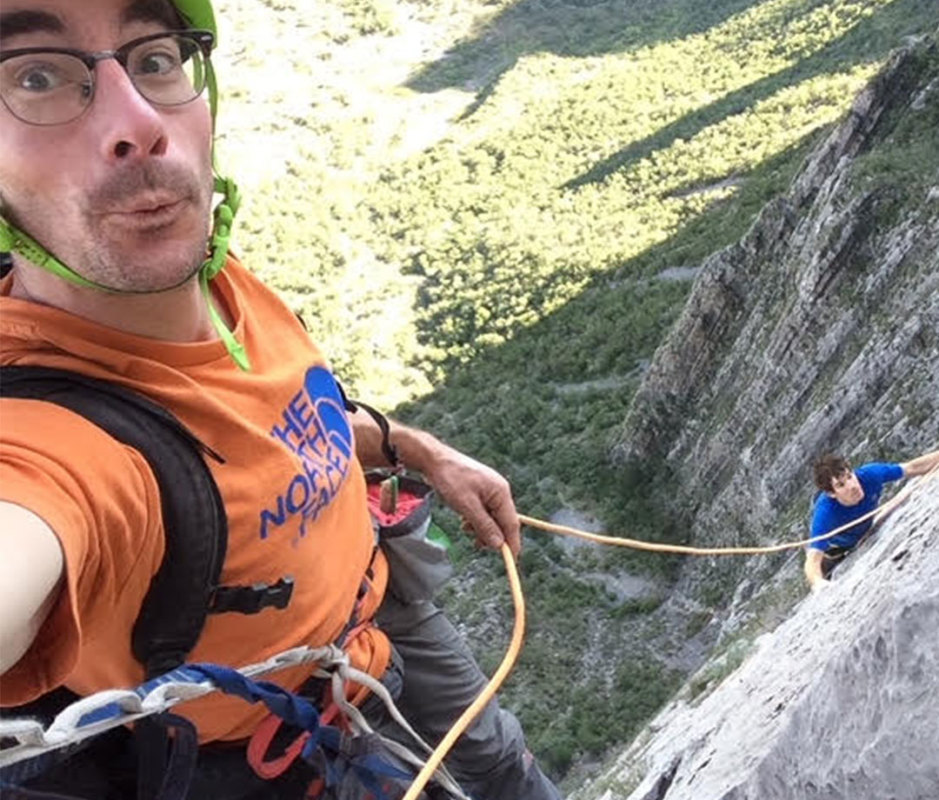
Cedar Wright Collection
Learning to trust the equipment is vital when it comes to fear management, Grupper adds. “On your first climb, when you’re on belay, climb up a dozen feet, have your partner take in all the slack, and hang by the rope. You’ll see how you can sit in your harness, and that the rope is not going to break.”
Falling is also a component of sport climbing. As you progress, you’ll take practice falls, first with a rope above your head, so you experience just letting go, hanging by the rope and your harness, and having your belayer catch you. “You start with short, baby falls, and come to understand that the system really works,” explains Grupper.
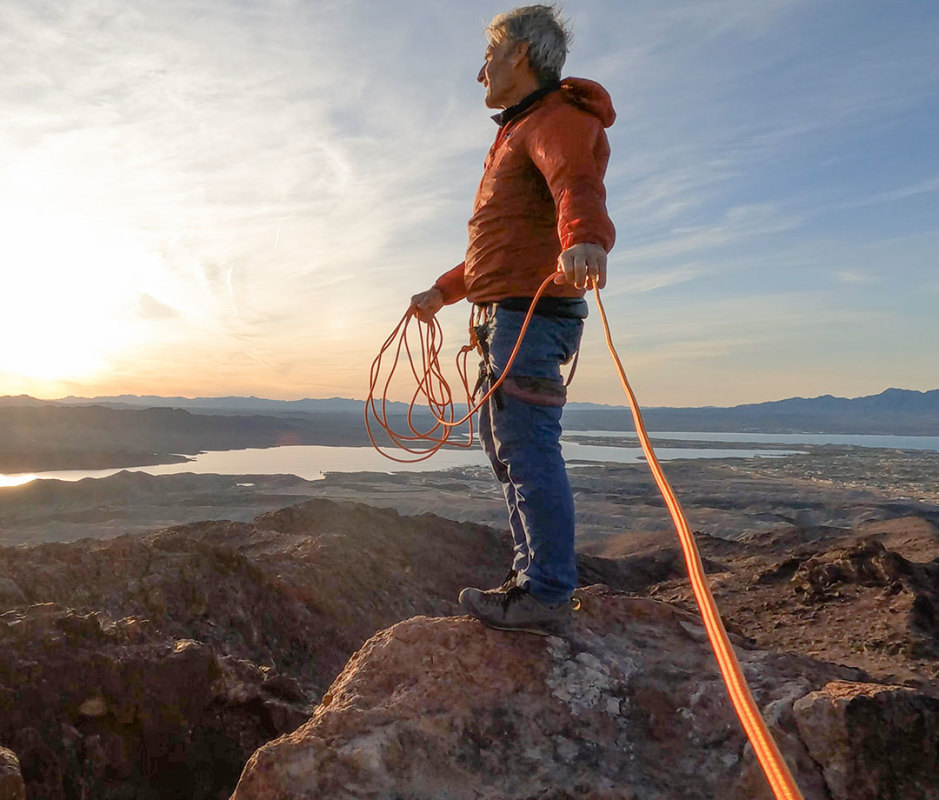
PK Smith/TFA/Ascent/Getty Images
5. Take It Outside
“When you’re transitioning from sport climbing in a gym to outside, there will be an adjustment period to more subtle and intricate techniques used outside,” says Wright. Reading real rock, and thinking and moving on the fly outside is a leap, he adds, “but climbing outside is nothing to be freaked out by. Just start with safe climbs below your max grade.”
First, you need to decide where to go. Get a guidebook to your local area or go on Mountain Project to read route descriptions. Start on the easy stuff. Wright suggests trying to team up with a mentor or a group of experienced climbers via an outdoor club or guide service. Above all, make sure you have a climbing partner you trust. Remember, the rope is your safety device, but you need a person on both ends.
Examine your climbing equipment before you climb. Do a visual check of your rope, harness, and quickdraws, which are two carabiners connected by strong nylon webbing.
“Scan the rock above you and the ground you’re standing on,” says Long. “Chances are, if it’s a standard, well-used sport climbing area, the routes will be free of loose rock. But always be prepared for someone to break a foothold or snap off a handhold.”
One of the most important words in a climber’s language is: “Rock!” It’s the signal you shout if you or another climber dislodges a piece of rock or drops a carabiner. When you’re belaying someone outdoors, always keep in mind the angle that rocks from above would fall and know your safe zone. If the leader falls, “Falling!” is the correct signal. You’ll always have your partner on belay but knowing that he’s about to fall puts you on high alert. Same goes for when you’re climbing or leading.
Finally, know your climbing partner. Sport climbing can be safely done, but it’s the communication and double-checking between partners that keeps it safe. “When you’re starting to go outside, it’s very important to pick partners who know exactly what they’re doing,” says Grupper. “I’d strongly recommend taking an outdoor climbing course or hiring a local guide for the day. Definitely pick someone who has experience in the area where you intend to go. Some of the biggest dangers in climbing happen when risks aren’t fully recognized. Communication with your climbing partner is key.”
Best Rock Climbing Gear to Get Started
Scarpa Generator V Climbing Shoe
The Scarpa Generator V has standard-setting Vibram XS rubber soles, providing powerful underfoot support and precision for edging and smearing without cramming your toes. Climbers with narrow feet should consider the Tenaya RA ($160) with its double Velcro closure, low volume heel, and slightly downturned last.
Related: How to Pick the Best Climbing Shoe for Your Foot
Sterling Aero 9.2mm Xeros Rope
The Sterling Aero 9.2mm Xeros Rope balances a durable, tough sheath with a lighter-weight core construction. The result is a rope that won’t weigh you down when you’re hiking to your climb, with great handling and fall protection. A middle mark lets you know the halfway point for rappels.
Trango Reaction Quickdraws and Superfly Evo Autolock
You’ll need a dozen quickdraws—carabiners attached to slings—to get started with sport climbing. The Trango Reaction is the No. 1 safety pick by the International Sport Climbing Federation for all world competition. It’s light and durable with a wide gate opening for fumble-free clipping. Trango’s Superfly Evo Autolock ($15) is ideal when you’re setting up an anchor at the route.
Arc‘teryx Konseal Harness
The Arc’teryx Konseal padded harness is designed for both the climbing gym and the crag. It’s lightweight, comfortable, and has four big gear loops, so you can carry all the quickdraws you’ll need. We like the adjustable leg loops that are snug, but not restrictive.
Petzl Neox
Thanks to a stainless-steel inner wheel, this new cam-assisted belay device lets you feed out rope when someone is leading, and easily take in slack when you’re top-roping. If a climber falls, the Petzl Neox‘s internal mechanism automatically locks down on the rope. Get the Petzl Freino ($50) carabiner with the extra “friction spur,” as it’s designed to give you more control when lowering a climber.
La Sportiva TX4 Evo Approach Shoe
Sometimes walking to the base of a cliff can be nearly as technical as the climb itself. La Sportiva TX4 EVO is a lightweight leather shoe with high-friction Vibram soles. We love the angular, slanted lugs, as they provide excellent all-terrain traction. For gym use and shorter approaches, the Bedrock Mountain Clog ($175) has a zero-profile drop and a grippy Vibram outsole with toe protection and the in-and-out ease of a sport sandal.
Health
Walmart Is Selling a $300 Power Tower for Just $128, and Shoppers Say It's 'Surprisingly Sturdy'

Men’s Journal aims to feature only the best products and services. If you buy something via one of our links, we may earn a commission.
When building a home gym, it’s easy to get overwhelmed by all the equipment options, especially when you’re working with limited space and a tight budget. But when you focus on versatile gear and hunt for deals, creating a useful setup is easily doable. Thankfully, Walmart has been slashing prices on a ton of fitness equipment, including its bestselling adjustable dumbbells and even a complete home gym system. Now, it’s reduced the price of a popular power tower by over $170, and it even ships for free.
The Pooboo Body Champ Multifunction Power Tower is on sale for $128, a 57% discount on its normal price of $300. This incredibly versatile workout station has earned nearly 250 five-star ratings from Walmart shoppers who’ve praised its “strong and sturdy” build and “quality fit and finish,” and it’s currently one of the top 5 bestselling models on the site.
Pooboo Body Champ Multifunction Power Tower, $128 (was $300) at Walmart
Don’t let the brand’s bizarre name fool you—this power tower is a well-made piece of gym equipment. It features steel construction and is rated to hold up to 480 pounds (the tower itself weighs 66 pounds). A nearly 42-inch H-shaped base gives it excellent stability, so it won’t wobble or shake when you’re exercising, and anti-slip feet on the bottom keep it securely planted on the floor. It’s also adjustable (from 71.4 inches to 94 inches) to accommodate users of varying heights. And, once it’s set up, you can use it for a huge range of exercises, including dips, pull-ups, chin-ups, push-ups, vertical leg raises, knee raises, and more.
According to Walmart reviewers, the Pooboo Body Champ stands out for its solid build and usefulness. “It’s a surprisingly sturdy piece of equipment,” a shopper said. “Everything about this fitness tower is perfect. I originally purchased this with the intention of only doing pull-ups on it, but after quickly assembling the power tower, I came to realize just how versatile it is. It has cushions for knee and leg raises, it’s sturdy, and the perfect width for dips.” Another shopper agreed, saying, “This was a much-needed addition to my home gym.”
“This thing is amazing and worth every penny,” said another, who added that it’s “easy to install and can hold a lot of weight.”
At just $128, this Pooboo power tower is a screaming deal, and it’s sure to get lots of use during your workouts. But this discount won’t last long, so grab one today before the price pumps back up.
Health
Alzheimer’s Drug May Save Lives Through ‘Suspended Animation’



By Lindsay Brownell | Wyss Institute Communications | Harvard Gazette
Could buy patients more time to survive critical injuries and diseases, even when disaster strikes far from a hospital
Donepezil, an FDA-approved drug to treat Alzheimer’s, has the potential to be repurposed for use in emergency situations to prevent irreversible organ injury, according to researchers at the Wyss Institute for Biologically Inspired Engineering at Harvard University.
Using Donepezil (DPN), researchers report that they were able to put tadpoles of Xenopus laevis frogs into a hibernation-like torpor.
“Cooling a patient’s body down to slow its metabolic processes has long been used in medical settings to reduce injuries and long-term problems from severe conditions, but it can only currently be done in a well-resourced hospital,” said co-author Michael Super, director of immuno-materials at the Wyss Institute. “Achieving a similar state of ‘biostasis’ with an easily administered drug like DNP could potentially save millions of lives every year.”
This research, published Thursday in ACS Nano, was supported as part of the DARPA Biostasis Program, which funds projects that aim to extend the time for lifesaving medical treatment, often referred to as “the Golden Hour,” following traumatic injury or acute infection. The Wyss Institute has been a participant in the Biostasis Program since 2018, and has achieved several important milestones over the last few years.
Using a combination of predictive machine learning algorithms and animal models, the Wyss’ Biostasis team previously identified and tested existing drug compounds that had the potential to put living tissues into a state of suspended animation. Their first successful candidate, SNC80, significantly reduced oxygen consumption (a proxy for metabolism) in both a beating pig heart and in human organ chips, but is known to cause seizures when injected systemically.
In the new study, they once again turned to their algorithm to identify other compounds whose structures are similar to SNC80. Their top candidate was DNP, which has been approved since 1996 to treat Alzheimer’s.
Achieving a similar state of ‘biostasis’ with an easily administered drug like DNP could potentially save millions of lives every year.
–Michael Super
“Interestingly, clinical overdoses of DNP in patients suffering from Alzheimer’s disease have been associated with drowsiness and a reduced heart rate — symptoms that are torpor-like. However, this is the first study, to our knowledge, that focuses on leveraging those effects as the main clinical response, and not as side effects,” said the study’s first author, María Plaza Oliver, who was a postdoctoral fellow at the Wyss Institute when the work was conducted.
The team used X. laevis tadpoles to evaluate DNP’s effects on a whole living organism, and found that it successfully induced a torpor-like state that could be reversed when the drug was removed. The drug, however, did seem to cause some toxicity, and accumulated in all of the animals’ tissues. To solve that problem, the researchers encapsulated DNP inside lipid nanocarriers, and found that this both reduced toxicity and caused the drug to accumulate in the animals’ brain tissues. This is a promising result, as the central nervous system is known to mediate hibernation and torpor in other animals as well.
Although DNP has been shown to protect neurons from metabolic stress in models of Alzheimer’s disease, the team cautions that more work is needed to understand exactly how it causes torpor, as well as scale up production of the encapsulated DNP for use in larger animals and, potentially, humans.
“Donepezil has been used worldwide by patients for decades, so its properties and manufacturing methods are well-established. Lipid nanocarriers similar to the ones we used are also now approved for clinical use in other applications. This study demonstrates that an encapsulated version of the drug could potentially be used in the future to buy patients critical time to survive devastating injuries and diseases, and it could be easily formulated and produced at scale on a much shorter time scale than a new drug,” said senior author Donald Ingber, the Judah Folkman Professor of Vascular Biology at Harvard Medical School and Boston Children’s Hospital, and the Hansjörg Wyss Professor of Bioinspired Engineering at Harvard’s John A. Paulson School of Engineering and Applied Sciences.
This research was supported by DARPA under Cooperative Agreement Number W911NF-19-2-0027, the Margarita Salas postdoctoral grant co-funded by the Spanish Ministry of Universities, and the University of Castilla-La Mancha (NextGeneration EU UNI/551/2021).
—
This story is reprinted with permission from The Harvard Gazette.
***
You Might Also Like These From The Good Men Project
Join The Good Men Project as a Premium Member today.
All Premium Members get to view The Good Men Project with NO ADS. A $50 annual membership gives you an all access pass. You can be a part of every call, group, class and community. A $25 annual membership gives you access to one class, one Social Interest group and our online communities. A $12 annual membership gives you access to our Friday calls with the publisher, our online community.
Register New Account
Need more info? A complete list of benefits is here.
—
Photo credit: unsplash
Health
Can Stuff in Rosemary Extract Fight Cocaine Addiction?

Researchers have discovered that an antioxidant found in rosemary extract can reduce intakes of cocaine by moderating the brain’s reward response, offering a new therapeutic target for treating addiction.


The study in the journal Neuron describes researchers’ focus on a region of the brain called the globus pallidus externus, which acts as a gatekeeper that regulates how we react to cocaine.
They discovered that within the GPe, parvalbumin-positive neurons are crucial in controlling the response to cocaine by changing the activity neurons releasing the pleasure molecule dopamine.
“There are currently no effective therapeutics for dependence on psychostimulants such as cocaine, which, along with opioids, represent a substantial health burden,” says corresponding author Kevin Beier, an associate professor of physiology and biophysics at the University of California, Irvine.
“Our study deepens our understanding of the basic brain mechanisms that increase vulnerability to substance use disorder-related outcomes and provides a foundation for the development of new interventions.”
Findings in mice revealed that globus pallidus externus parvalbumin-positive cells, which indirectly influence the release of dopamine, become more excitable after being exposed to cocaine. This caused a drop in the expression of certain proteins that encode membrane channels that usually help keep the globus pallidus cell activity in check. The researchers found that carnosic acid, an isolate of rosemary extract, selectively binds to the affected channels, providing an avenue to reduce response to the drug in a relatively specific fashion.
“Only a subset of individuals are vulnerable to developing a substance use disorder, but we cannot yet identify who they are. If globus pallidus cell activity can effectively predict response to cocaine, it could be used to measure likely responses and thus serve as a biomarker for the most vulnerable,” Beier says. “Furthermore, it’s possible that carnosic acid could be given to those at high risk to reduce the response to cocaine.”
The next steps in this research include thoroughly assessing negative side effects of carnosic acid and determining the ideal dosage and timing. The team is also interested in testing its efficacy in reducing the desire for other drugs and in developing more potent and targeted variants.
Scientists from the University of West Virginia and the University of Colorado participated in the study.
Support for this work came from the National Institutes of Health, One Mind, the Alzheimer’s Association, New Vision Research, BrightFocus Foundation, and the Brain & Behavior Research Foundation.
Source: UC Irvine
—
Previously Published on futurity.org with Creative Commons License
***
You Might Also Like These From The Good Men Project
Join The Good Men Project as a Premium Member today.
All Premium Members get to view The Good Men Project with NO ADS. A $50 annual membership gives you an all access pass. You can be a part of every call, group, class and community. A $25 annual membership gives you access to one class, one Social Interest group and our online communities. A $12 annual membership gives you access to our Friday calls with the publisher, our online community.
Register New Account
Need more info? A complete list of benefits is here.
—
Photo credit: iStock
-

 African History5 years ago
African History5 years agoA Closer Look: Afro-Mexicans 🇲🇽
-

 African History8 months ago
African History8 months agoBlack History Facts I had to Learn on My Own pt.6 📜
-

 African History5 years ago
African History5 years agoA Closer Look: Afro-Mexicans 🇲🇽
-

 African History1 year ago
African History1 year agoMajor African Tribes taken away during the Atlantic Slave Trade🌍 #slavetrade #africanamericanhistory
-

 African History1 year ago
African History1 year agoCameroon 🇨🇲 World Cup History (1962-2022) #football #realmadrid #shorts
-

 African History1 year ago
African History1 year agoWhat did Columbus Find in 1493? 🤯🔥🔥 #history #civilization #mesoamerica #africa #kemet
-

 African History7 months ago
African History7 months agoBlack History Inventors: Mary Kenner 🩸
-

 African History1 year ago
African History1 year agoOrigin Of ‘Cameroon’ 🇨🇲😳#africa

